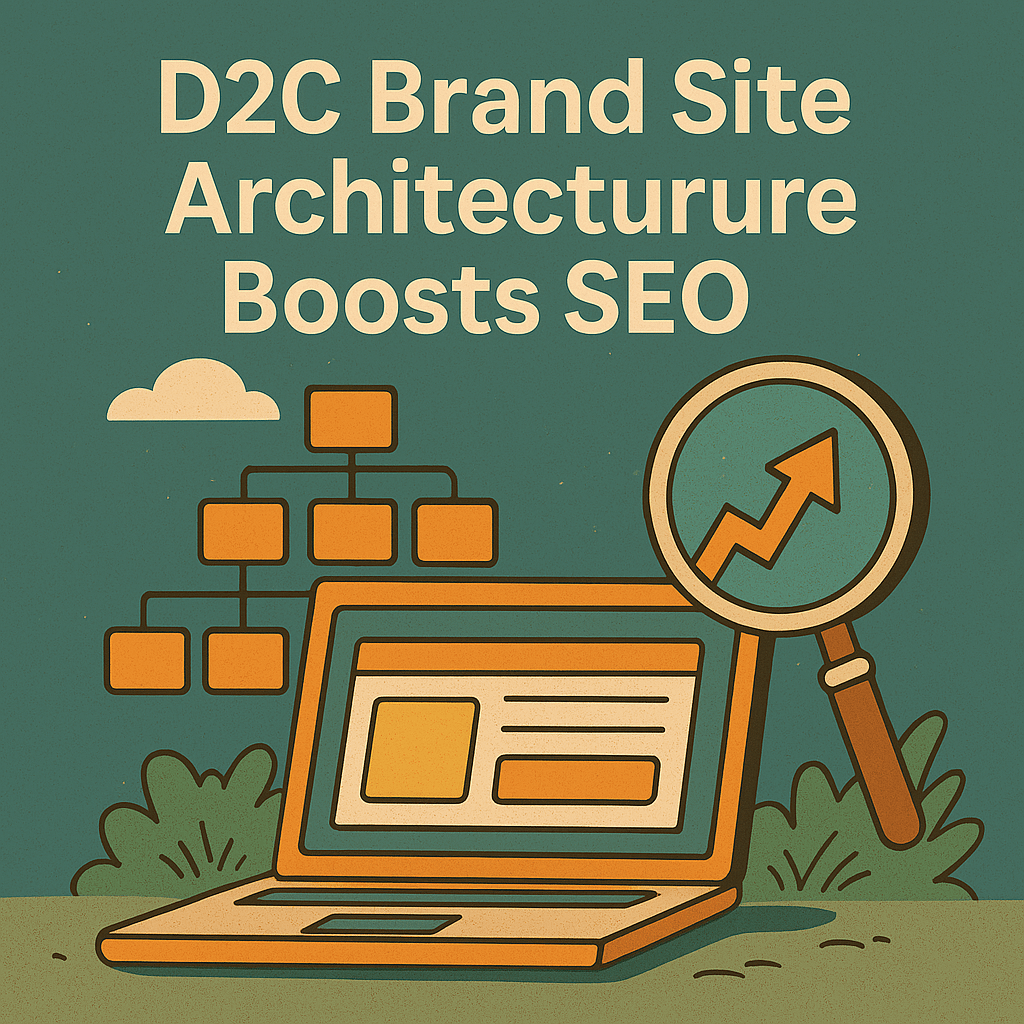D2C brand site architecture transforms SEO, enhances user experience, and drives higher rankings. Learn expert strategies to optimize your site structure for better visibility, conversions, and long-term growth in the competitive ecommerce landscape.
Why D2C Brand Site Architecture is Crucial ?
Site architecture is like the backbone of your website. Imagine it as the blueprint that dictates how all the pages on your site are organized and connected. For Direct-to-Consumer (D2C) brands, where standing out from the crowd and directly engaging with customers is crucial, a well-thought-out site structure can be the key to success.
Enhances Crawlability for Search Engines
Think of search engines like Google as explorers. They need to crawl through your website to discover and index its content. If your site is a maze, it can slow them down.
- Flat vs. Deep Architecture: A flat site means users (and search engines) can reach important pages within a few clicks from the homepage. Deep architectures, on the other hand, bury these pages under layers of navigation.
- Internal Linking: By linking related pages, you create a network that search engine bots can follow, ensuring all your pages get indexed.
For example, if you sell eco-friendly skincare products, make sure users and search engines can easily navigate from your homepage to categories like “Moisturizers” or “Serums,” and then to individual product pages.
Improves User Experience (UX)
Site architecture directly impacts how users interact with your website. A smooth user experience boosts satisfaction and reduces bounce rates, which is a good sign for search engines.
- Logical Navigation: Organize your site into intuitive categories and subcategories. For example, a D2C fashion brand might structure its site like this:
- Homepage → Women’s Clothing → Dresses → Summer Dresses.
Breadcrumb Navigation: Breadcrumbs show users where they are on your site and make it easier to explore related sections.
When users find what they’re looking for quickly, they’re more likely to stay longer and explore more pages, signalling search engines that your site is valuable.
Facilitates Keyword Optimization
A well-organized site allows you to target keywords strategically across different sections without causing internal competition.
- Category Pages: Optimize for broad keywords like “Men’s Running Shoes” or “Organic Skincare Products.”
- Product Pages: Target specific long-tail keywords such as “Breathable Men’s Running Shoes for Marathon Training.”
- Blog Content: Capture top-of-funnel traffic with informational content and keywords like “How to Choose Running Shoes.”
Aligning your site structure with keyword intent helps create a hierarchy that supports both user needs and SEO goals.
Distributes Link Equity Effectively
Link equity, or “link juice,” is the value passed from one page to another through links. A good site architecture ensures this value flows efficiently across all key pages.
- Homepage Authority: The homepage often gets the most backlinks and authority. A good structure ensures this authority spreads evenly across key pages.
- Internal Linking Strategy: Use internal links within blogs or product descriptions to direct traffic and link equity to high-priority pages.
For example, if a blog post about “The Benefits of Organic Cotton” links to your product page for organic cotton t-shirts, it boosts both traffic and authority for that product page.
Supports Mobile-Friendliness
With mobile commerce on the rise, having a mobile-friendly site architecture is essential for both user experience and SEO.
- Responsive Design: Ensure your site adapts seamlessly across devices.
- Simplified Navigation: Use collapsible menus or sticky headers for easy access on mobile devices.
- Fast Loading Times: Streamlined architecture reduces elements that slow down load times, crucial for mobile SEO.
For D2C brands targeting mobile-first markets like India, optimizing for mobile users can significantly boost engagement and conversions.
Reduces Duplicate Content Issues
A poorly structured site can lead to duplicate content, which confuses search engines and dilutes ranking potential.
- Canonical Tags: Use these to indicate the preferred version of a page when multiple URLs serve similar content.
- Faceted Navigation: Implement noindex tags or canonicalization to handle duplicate URLs created by filters (e.g., by size or color).
Addressing these issues at the architectural level ensures that each page’s SEO value is maximized.
Enables Better Content Silos
Content silos group related content together, reinforcing topical relevance. For D2C brands, this helps establish authority in niches and improves internal linking.
- Main Category Page: “Sustainable Fashion”
- Subcategories: “Eco-Friendly Dresses,” “Recycled Denim Jeans”
- Supporting Content: Blog posts like “Why Choose Sustainable Fabrics?” or “How Recycled Denim Is Made.”
This approach signals expertise in specific areas while guiding users through a logical journey from informational content to transactional pages.
Supports Scalability as Your Brand Grows
A scalable site architecture ensures that as your D2C brand expands, your website remains organized and efficient.
- Plan for Growth: Design your structure with future categories or products in mind.
- Regional Expansion: Use separate subdirectories or subdomains for different countries with localized content and hreflang tags.
Scalability prevents disruptions in user experience or SEO performance as your business evolves.
Site architecture is more than just an organizational framework—it’s the backbone of a successful ecommerce SEO strategy for D2C brands. By enhancing crawlability, improving user experience, enabling keyword optimization, distributing link equity effectively, supporting mobile-friendliness, reducing duplicate content issues, creating content silos, and planning for scalability, you can build a strong foundation that drives traffic to your website while boosting conversions.
Investing time in designing an intuitive and SEO-friendly site structure will not only improve rankings but also create a seamless shopping experience that keeps customers coming back—helping your D2C brand thrive in today’s competitive ecommerce landscape.
Related Articles:
How to Start a D2C Brand: The Ultimate 2025 Startup Guide for Beginners







